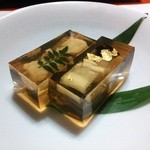
喜太八
Kitahachi ◆ きたはち
3.67
Senboku, Kishiwada
「Fugu (Blowfish)」
20,000-29,999円
--
Opening hours: From October to the end of March (confirmation required) Hours of operation
Rest time: are subject to change, so please check with the store before visiting.
大阪府岸和田市五軒屋町24-14
Photos
(20)

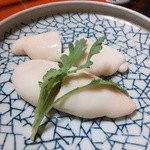
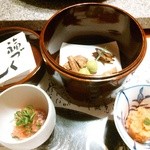

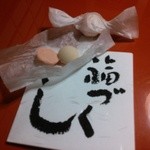
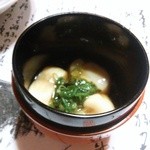
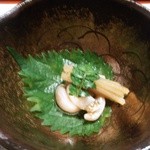

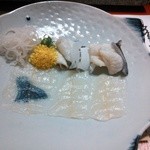
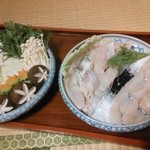
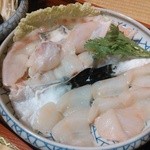
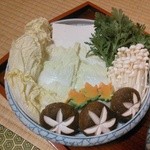
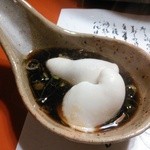
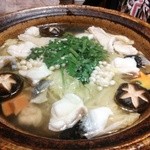
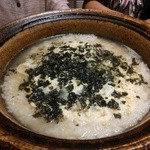
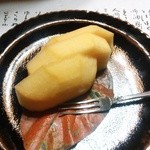
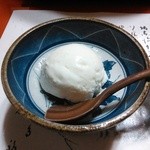
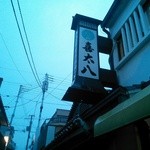
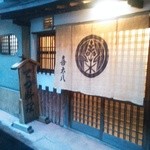
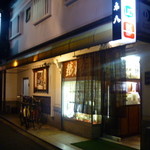
Details
Reservation Info
can be reserved
Payment Method
Credit cards accepted
(VISA, JCB, AMEX, Diners)
Number of Seats
20 seats
Private Dining Rooms
Yes
(2 persons can, 4 persons can, 6 persons can, 8 persons can, 10~20 persons can)
Parking
None
Facilities
There is a tatami room
Drink
Sake available
Comments
(21)
hirokiworld54
4.00
#Kita Hachi#In Kishiwada, there is a Fugu Museum. We visited before dinner#Asked various questions about Fugu#The enthusiastic talk from the grandson was non-stop#Let's put a stop to it for now#There was a Fugu god#To prevent deaths from poisoning, he founded the Japan Research Association and wrote textbooks on Fugu preparation qualifications#Dr. Kitahama Kiichi, the Fugu expert, is 95 years old and still active, standing in the kitchen with his grandson#You can eat Fugu spines here. The stomach wall of the Fugu#Fugu Shirako sashimi. The unique texture and flavor are incredibly delicious#Shirako Fugu simmered. This dish slowly infuses the broth that comes out when simmering into the center#It's so delicious, we enjoy it little by little with Fugu fin sake#It's a waste#The Fugu fin sake here is the best. The bad smell of Fugu fin sake is due to improper drying#Amazing, Dr.#Damier-patterned simmered dish. It's made by repeatedly solidifying multiple layers. It's too much effort and it's strange#Tessa. The tail meat is pulled in the direction of the fibers, so it looks like a cut you've never seen before#Indeed, there's a taste that you've never experienced before, and it's surprising, the best in Japan#The main Tetchiri pot is like Daichi's pot or Takajoju's steel plate, soaked with the fat and flavor extracted from the Fugu liver over many decades#We also pay attention to the temperature, just below boiling#The last Zosui is the most delicious Fugu Zosui I've ever had#You can only eat these dishes here#The doctor's knowledge and skills are passed down to the grandson, generation to generation#The grandson's love and knowledge of Fugu overflow#The palpable love for Fugu is wonderful#When you say "you're a pervert,"#I'm glad to hear that as a compliment#Yes, I am a pervert.
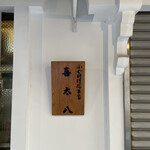
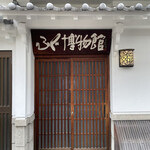
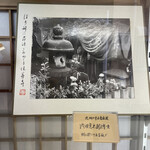
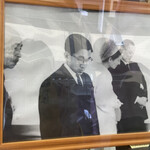
たつべ~やん
3.90
In the town known for its danjiri festivals, Kishiwada, there is a fugu (blowfish) deity. We were fortunate to be invited to the exclusive establishment, where only one group is allowed per day. Each dish was a masterpiece based on a thorough understanding of fugu, reaching the realm of gastronomy. The explanations provided for each dish were meticulous, and we savored each bite. The concept of enjoying the texture of fugu was beautifully shattered, and we truly experienced bliss with each dish. I might try to replicate the final way of eating the tetchiri dish. This is a wonderful restaurant that I would love to visit again.
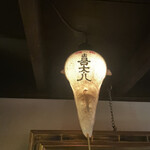
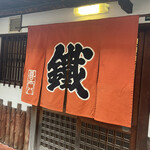
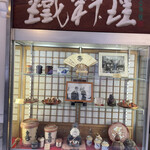

解答ルパン
4.30
Kitahama is a famous fugu restaurant in Osaka. It had been six years since my last visit. If you are not a regular customer, you need to make a reservation about a year in advance. This time, our reservation expert managed to secure a booking a year in advance. The participants were all very excited, with three of them arriving early at 5:00 PM for a 5:30 PM start. Due to the difficulty in getting a reservation even for regular customers, the restaurant had decided to part ways with Michelin. The drawings of fugu on the walls brought back nostalgic memories. The owner, Fugu expert Kitahama, is 94 years old and still energetically working in the kitchen with his grandson. The dishes are exclusive to the restaurant and have been handed down from generation to generation. The fugu served at this restaurant is from Enshu-nada. However, due to the effects of global warming, the fishing boats from Enshu-nada sometimes go as far north as Shizuoka. We started with ginkgo nuts and bone crackers. The right side was fried fugu needle roots, a dish created based on customer requests. Then we had fugu skin with plum, fugu stomach, and fugu abdominal wall. These are rare delicacies that are hard to find at other restaurants. The sashimi of fugu shirako was exceptional, with a unique smooth texture. The seasoned shirako was also outstanding. The simmered fugu shirako was a masterpiece, with the broth evenly spread throughout the shirako without overcooking. It was prepared by Mr. Kitahama himself. The fugu shirako fukume-ni was a delicacy that left us in awe of its deliciousness. The fugu saezuri, the part of the fugu's esophagus from its mouth, was served with vinegar miso. It had a collagen-rich unique texture. The hire-sake was a rare delicacy that retained the taste of fugu's hire despite being clear sake. We then had tessa and yubiki, which were both delicious and satisfying dishes. Finally, the main event, tetchiri, was served. The cooking point was the pot, which had been used for over 70 years and could produce real fugu broth just by cooking in hot water. The third-generation owner carefully prepared the tetchiri in the pot, ensuring it was not boiled to retain the collagen-rich flavor. The tetchiri was served with fugu shirako and fugu meat, all adding depth to the dish. The pot shirako was a delicacy that stood out from other fugu restaurants. The ponzu sauce was made with soy sauce from Nihon Marten. We also enjoyed fugu ara, which had a rich flavor. The meal ended with fugu zosui, which was the best I've ever had. It was served with pickled turnips, and the tea for zosui was cold tea. The zosui was incredibly delicious, making it the best fugu zosui I've ever had in my life.
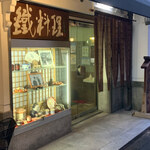
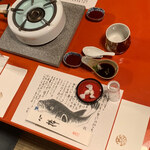
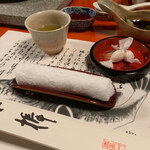
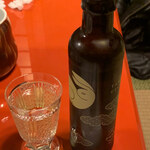
くわ さん99565
4.20
I don't usually go to Izumi region for meals, but this time I visited a Michelin-starred fugu restaurant in southern Osaka. I was nervous but excited to try it out. It was almost the end of the season, so I was lucky to visit. I often go to fugu restaurants, but this was the first time I experienced a fugu course meal. Everything I ate was delicious and it was a series of pleasant surprises.
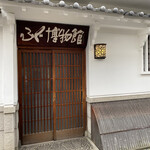


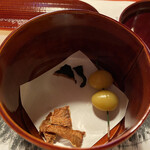
おさきりほ
4.00
The cuisine at this association is known as gastronomy. I wanted to meet the 92-year-old chef, but unfortunately, I couldn't. The fugu sake was delicious. The small dishes served up to the dessert course were unlike any fugu dishes I've had before. Each dish was carefully prepared, and it was delicious. Finally, I saw a pair of earrings made from the smallest fugu in the world, requested by Christian Dior. I thought it was like a piece of art. I thought it was a cost-effective restaurant. I want to go back again.

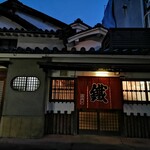
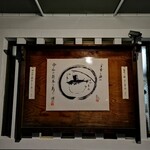
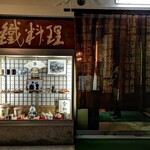
♡みぃみの365日♡
4.50
In February 2016, there is a passionate natural blowfish cuisine specialty restaurant ☆ "Kita Hachi" that you must visit before talking about blowfish. It is a place that can be considered the holy land for blowfish lovers from all over Japan, or even the world. It has been awarded two Michelin stars and has a history of 100 years. The head chef here is a pioneer in blowfish research in Japan, with 60 years of experience in blowfish research, making him a leading authority on blowfish in our country. He is also certified as a specimen for Asian ethnology. There is a blowfish museum where you can see the results of 60 years of research. The head chef, Kiichi Kitahama, who is 85 years old, handles all the dishes by himself, so the restaurant can only accommodate two to three groups per day. Now, let's talk about the dishes: The course costs 32,400 yen per person. First, the "Oimono" is served, and when you open the lid... there is another lid. When you open that lid, you will find the dishes. The meal includes a variety of blowfish dishes such as "Fuku-zukushi," "Hassun," "Namashirako sashimi," "Fukunishiki," "Bekkou-nagashi," "Tessa," "Tecchiri," "Tennan-nabe shirako," "Tecchiri," and "Zosui." Each dish is meticulously prepared and presented, showcasing the chef's exceptional skills. The blowfish dishes are served only during the blowfish season (late October to early April). The head chef, Kiichi Kitahama, has dedicated his life to blowfish, conducting research and publishing papers in collaboration with medical schools. He has never appeared in front of customers in the 60 years he has been in the business. His dedication and passion for blowfish cuisine are truly inspiring. This was an amazing dining experience that went beyond just eating blowfish. I am deeply impressed by the dedication and beliefs of the head chef, who has devoted his life to blowfish. I am truly grateful for the wonderful dinner experience in the world of blowfish gastronomy. Thank you very much.
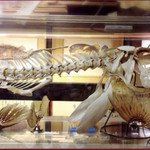
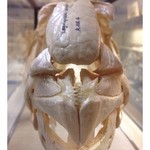
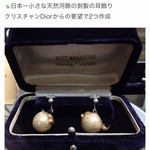
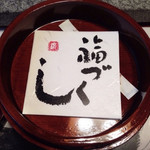
RHC
4.00
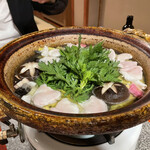
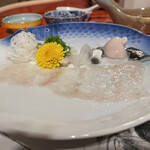
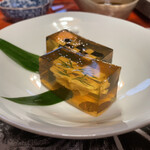
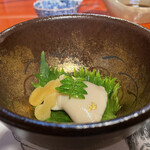
mtyy
5.00
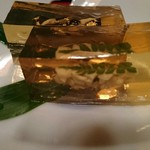
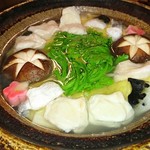
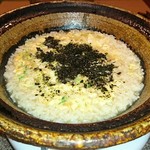
shigeさん。
1.50
I don't understand.
ジョンYM
4.00
Today, I went to Kitahachi in Kishiwada for a gourmet gathering. This restaurant has 2 Michelin stars and is one of Osaka's top fugu (blowfish) restaurants, alongside Takoyasu in Minato-ku. It was quite a challenge to secure a reservation, as I had to call three times before finally getting one. The course menu offered unique dishes that are hard to find elsewhere, with the simmered fugu milt (white fish sperm) being particularly delicious. The restaurant has a high level of sophistication, but I would definitely like to visit again.
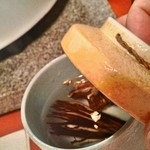
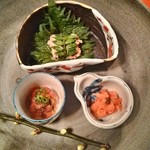


解答ルパン
4.20
Delicious food is a science, and good chefs are scientists. This was made clear to me at the end of the year by the Michelin two-star Fugu cuisine restaurant Kitahachi. At the annual year-end reunion with six people, the restaurant was reserved just for us. The organizer had been enthusiastic about making reservations since January. We arrived after getting lost from Nankai Kawachi-Nagano Station. We were able to visit the Fugu Museum for a while. The current owner, second generation Kita Hama Kiichi, is 88 years old but still stands in the kitchen every day. His perfect cooking skills show no signs of his age. The manager, who is 83 years old, cannot go up and down the stairs, so the grandson of the future third generation, who is 38 years old, served us. We were served various fugu dishes, each meticulously prepared with unique techniques. The dishes included fugu bone senbei, fugu skin with umeboshi, fugu stomach wall with mentaiko, and so on. The highlight was the fugu hot pot, which was cooked in a pot that had been used for over 70 years, creating a rich fugu broth. The fugu sashimi, carefully sliced with a special knife, and the fugu tail meat were also exceptional. The meal ended with a delicious porridge made from the remaining broth and a refreshing cup of cold tea. The entire experience was truly remarkable, with innovative fugu dishes created by the talented chef. This restaurant is a must-visit for anyone who appreciates fine dining.
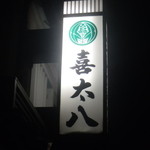
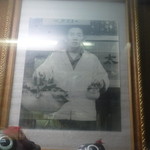
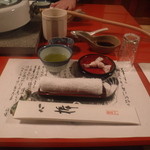
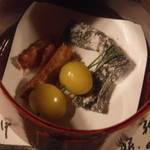
はらしゅん
4.00
A high-class blowfish specialty store in Kawachi-Nagano. The store has a history of about 100 years. The second-generation owner personally prepares all the dishes, with over 300 blowfish recipes to choose from. The owner selects the best dishes that meet his standards. The owner's dishes, made with meticulous attention to detail, are truly impressive. This place completely changed my perception of blowfish cuisine. While the prices may be a bit high for frequent visits, if you love blowfish, it's definitely worth visiting at least once in your life. The store also has a commitment to their hot pots, using clay pots and taking great care in managing them, even closing the store in the summer to maintain the pots properly. They have confidence in cooking with the clay pots that have absorbed the essence of the blowfish broth. They have a museum of blowfish in front of the store, displaying various types of blowfish other than the tiger blowfish. It's worth a visit to see the different types of blowfish and learn more about them.
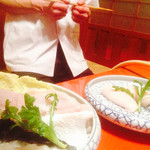
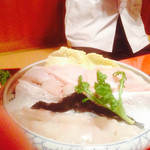
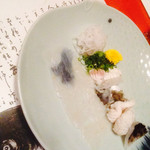
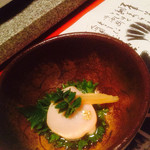
カプチーノ・キッド
3.70
Michelin two stars. There is a pufferfish museum opposite the restaurant! I wish I had time to see it. Upstairs to the tatami room. The elderly owner cooks alone, so they only serve three groups a day. The tea snack with wasanbon sugar is innovative.
- Assorted appetizers (bone senbei, sake kasu, gyunyu) - Sweet and rare delicacies. The drink options in Kishiwada are limited. Only two choices of sake, big or small. And this sake on this day is a bit subtle. It has a twisted aroma and the alcohol taste is prominent. Maybe it's better to bring your own champagne.
- Skin with plum dressing
- Fugu skin with Hakata style dressing
- Uni with shirako dressing
- Plum mayo dressing with unknown ingredient
Continuing with the rare delicacies. The taste of the ingredients is masked by ikura or uni, so you can enjoy the texture. The mayonnaise is a bit... tasty but not something you'd want in a high-end restaurant.
- Shirako sashimi
Winter shirako is large, but autumn shirako is small and holds its shape better. The taste is solid and simply delicious! The ponzu sauce is sweet. This day happened to be the first day of the season! (Open from October to April). The next six months, they do things like painting (the owner paints all the decorations in the restaurant), making pottery, making ponzu sauce, etc.
- Saezuri vinegar miso dressing
Vinegar miso, which I'm not fond of, but this one is sweet and rich. Too sweet... I couldn't handle it... When the taste is this strong, you can't really tell what you're eating...
- Fukunishiki (simmered shirako)
This is amazing! It has a sweet seasoning, but apparently it's difficult to season shirako, it's a trade secret. The grandson of the third generation (the second generation has passed away) explained this to us. I've been coming to this restaurant for 17 years, but they won't teach me how to cook. The owner is 87 years old, right?
- Bokko flow (simmered gelatin)
It's beautiful. The aesthetics of Japanese cuisine. I think it's a waste that you can't really tell if it's meat or lung with the strong taste. There's too much, maybe one would be enough...
At this point, I'm quite full. (The dishes come out slowly, and the explanations are long, so it's not progressing quickly... Well, the grandson is a nice person. But he's the type of person who stops working when he talks...)
- Fugu tataki
Oh, delicious. Finally, something that makes you feel like you're eating fugu (laughs).
- Nihonbare (tessa)
The way they cut tessa is different from the usual way, apparently. Vertical? I didn't listen much... (My legs are numb because it's a tatami room. It's not poison (laughs). I forgot the explanation of the upper part. This is also served with plum. It's not bad, but I prefer ponzu. I'm quite full, and the deliciousness is diminishing... I wanted to eat this first!!!
- Mitsu no Fuji (tecciri)
I'm already full!!! (Can you please speed up the service a bit!!!) The trick is not to let it boil. The pot is 70 years old!!! I ate three pieces of meat and gave up. It's too much even though it's premium fugu...
- Nabe no shirako
Shirako is always good! It's just delicious. I don't like how the ponzu sauce dilutes in the pot. Chinese cabbage is a serious crime!! I want a separate plate for it.
- Fugu zosui
I had seconds! It's still delicious.
- Fruits
I'm not a fan of persimmons, but there are a lot!! I'll try to eat half because it's good for my health.
- Ice cream
Vanilla, delicious. Phew... I'm tired. It's been 3 and a half hours. My legs are really sore... This volume gives a sense of fullness, but the next day you feel refreshed. If it were French cuisine, I'd be knocked out. I think I would have enjoyed it more if they had served half the amount in the first half. However, I would never go there on my own, so it was a good experience!
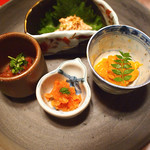
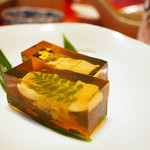
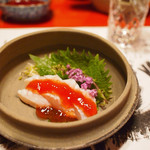
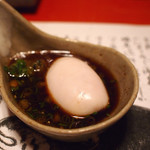
真面目愛妻家
5.00
I had heard from my uncle, who was a companion of Professor Kiyomizu at Todaiji Temple in Nara, about the best fugu restaurant in Japan where we were treated to a meal. I had been wanting to visit for a while. Before the meal, I saw a sign for the fugu museum with Professor Kiyomizu's seal on it. The museum may be in a inconspicuous location, but it is definitely worth a visit. I received a detailed explanation and learned a lot about fugu. The meal was different from the usual fugu course I had before, with various parts skillfully prepared and a lot of effort put into the preparation. The taste was exceptional, and the service was excellent. I definitely want to come back to this restaurant.



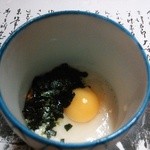
29jiro
3.70
Fugu is something I go to a few times a year, but this place is exceptional compared to other fugu restaurants! The dishes are finely prepared, with each part of the fugu separated and explained. Unlike other restaurants, here they serve things that you wouldn't normally see, like the stuff around the jaw. I was confused at first, but it was a new and enjoyable experience. The main dish, the hot pot, was different as well, with both fugu and vegetables cooked together. Usually, the vegetables are added later, but this way was also good. The porridge at the end was more than I expected, and I couldn't finish it all. I'm sorry. It was very delicious. Thank you for the meal.
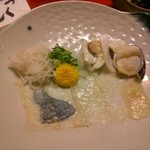
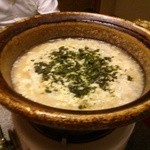
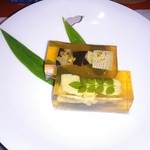
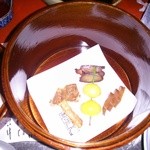
ウィーンの森の物語
0.00
Fugu is a representative taste of winter, combining the delicate and elegant flavor of its meat with the rich and aromatic flavor of its liver and milt, bridging the two extremes of umami. When it comes to winter flavors, many people also mention crab alongside fugu, but personally, I would definitely give the upper hand to "fugu." Fugu (tiger pufferfish) comes in various flavors, depending on factors such as where it was caught and its size. The taste can vary greatly, with Seto Inland Sea fugu having a different texture compared to Japan Sea fugu. Additionally, the size of the fugu plays a significant role in its taste. Some say that aging the fugu meat can enhance its flavor, while others prefer it fresh. Each restaurant has its own unique cooking methods and techniques, making the experience of eating fugu diverse and exciting. One such restaurant is Kitahachi, known as a sacred place for fugu lovers. While the quality of the fugu at Kitahachi may not have been the best compared to other restaurants in the same price range, the innovative cooking methods and the chef's skills were truly impressive. The course menu at Kitahachi offers a variety of dishes that are not commonly found in other fugu restaurants, showcasing the chef's creativity. The fugu sashimi, sliced vertically using a custom-made knife, was a masterpiece that highlighted the chef's knife skills. The flavors were delicious, but they did not reach the level of blissful indulgence experienced at other top fugu restaurants. Personal preferences aside, some dishes like the milt with plum sauce and the vinegar miso were unique and enjoyable. Overall, while the fugu at Kitahachi was tasty, it did not surpass the exceptional dining experience at other renowned fugu establishments.
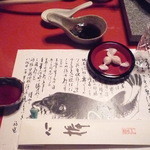
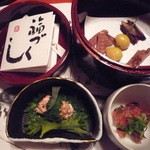
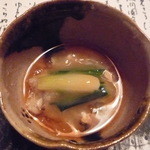
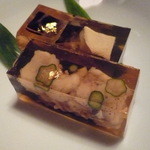
フェルゼン伯爵
4.00
Osaka Prefecture is the prefecture with the highest consumption of blowfish in Japan, accounting for about 60% of the national catch. In the southern part of Osaka Prefecture, known for its Danjiri Festival, there is a restaurant called "Kitahachi" that has been researching blowfish for about 60 years, making it a leading authority on blowfish research in Japan. The restaurant was established in 1913 and is a long-established store with a history of about 100 years. The chef in charge of all the cooking is Kiichi Kitahama, the second generation who took over from the founder, Kitaro Kitahama, born in 1928 and now 83 years old. The restaurant only accepts a few reservations per day because the chef prepares all the dishes alone. The restaurant is open only during the blowfish season, from mid-October to the end of April the following year. The grandson of the chef, who is being trained as a potential third generation, served us and explained the dishes. He mentioned that during the off-season, they focus on managing the clay pots used for blowfish dishes. These clay pots, all about 70 years old, are highly valuable and require meticulous care. While most blowfish restaurants offer other dishes like softshell turtle to operate year-round, this restaurant does not compromise on its blowfish-focused menu. The chef's unwavering commitment to blowfish was evident in every aspect of the restaurant. The chef believes that "all customers are equal" and does not change his attitude regardless of who visits the restaurant. The grandson mentioned that even if the Emperor visited, the chef would not change his demeanor. The chef's grandson seemed both pleased and embarrassed when I praised the chef's strong and admirable character. The menu for the day we visited included a 13-course blowfish meal priced at 20,000 yen. The chef's repertoire includes about 200 to 300 blowfish dishes, and only blowfish weighing 1.2 to 2 kg are used because larger blowfish have coarser meat and inferior taste. The chef's culinary skills were astonishing, with dishes like the gelatinous shellfish made solely from blowfish gelatin being beautifully transparent. The "blowfish milt simmered dish" maintained its shape without falling apart, a technique passed down through generations. The chef's expertise and dedication to blowfish were truly remarkable.
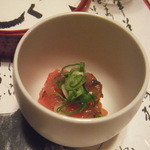
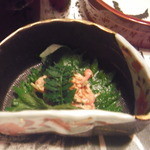
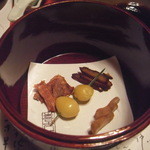
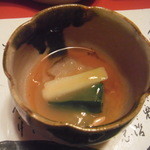
Joie de Vivre
0.00
Mr. Kitaichi, who had been wanting to visit this particular restaurant for several years, finally made the trip this year during the height of winter, expecting the shirako to be just the right size. His immediate post-meal impression was, "I found another amazing restaurant!!" The menu for the day included: beer, Kirin Lager classic, fin sake, Fukuzukushi bone senbei (original baked snack), dried sautéed sakekasu (dried sake lees marinated in a unique seasoning), gyokan (concentrated shirako used for sprinkling powder), ginkgo nuts, skin and umeboshi (pickled plum) salad with green onions, stomach and umeboshi salad (with sansho pepper, mayonnaise, and enoki mushrooms), vinegar miso salad with saezuri fish and scallions (collagen supplement), amber flow (a dish with fugu-derived ingredients like skin, meat, okra, gold leaf, floating in a gelatinous broth), Fukunishiki (shirako simmered in ginger and sansho pepper), tessa (fugu sashimi with plum sauce), shirako sashimi with green onions and a special sauce (arginine supplement), tetchiri (hot pot with fugu and various ingredients in ponzu sauce), and zousui (rice porridge with fugu broth). The restaurant takes great care in maintaining their clay pots, which have been used for over 70 years, and the dishes are prepared by the staff. The meal was enjoyed by Mr. Kitaichi and his companions, and even the cat would have been impressed by how clean the plates were after the meal. The dessert included strawberry with hot hojicha tea and ice cream with liqueur. The overall creativity and originality of the dishes, combined with the warm and friendly service, made it a memorable dining experience for Mr. Kitaichi. He looks forward to visiting the restaurant again in the future. Additionally, the fugu museum showcasing the results of the owner's 60 years of research is a must-see attraction. The group had the opportunity to learn interesting facts about the taste of fugu during their visit. A big thank you to everyone involved!
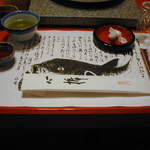
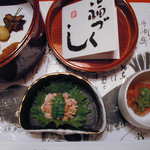
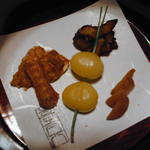
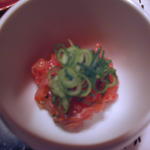
ゆう子remix
4.20
The fugu restaurant is a place I have visited many times, but no matter how much I eat, it seems never-ending... It's so delicious. I can't get enough of it. There's no getting tired of it. This restaurant, Kita Hachi, seems to have two Michelin stars. I didn't know that... Well, this restaurant is truly all about fugu - it seems the owner is fascinated by fugu, even creating a fugu museum and collaborating with a university to research fugu poison. He is also quite skilled in painting (sumi-e) and has painted fugu artwork (I received a fugu painting as a souvenir). It's a place where you can enjoy various things, not just the food. If you love fugu, I think it's a restaurant worth visiting at least once. As you can see in the photos, the fugu simmered in soy sauce is incredibly beautiful and glittering. It's made of fugu gelatin, but it's firm and jiggly! The taste is elegant and quite exquisite. The tessa (fugu sashimi) portion seems a bit small, but it's sliced vertically with a unique knife that most people can't imitate. It even comes with the swim bladder, so you can eat parts that you wouldn't normally find in other restaurants. The meat for the hot pot and the skin are quite generous in portion, but since the fugu used is around 1 kg, the shirako (fugu milt) is a bit small. Shirako is cooked in various ways like in a simmered dish or in a hot pot, but unfortunately, my favorite salt-grilled shirako was not available. In Kyushu, salt-grilled shirako is a must-have, so the hot pot contains more meat and less tessa, while in Kansai, shirako is put in the hot pot and there is more meat for the hot pot and less tessa. The hot pot includes fugu and vegetables cooked together. There are various ways to enjoy fugu, and that's part of the food culture. I still think that fugu is more a part of Western culture - there are other famous fugu restaurants in Osaka, so I would like to explore more and try different places. Thank you for the delicious meal!


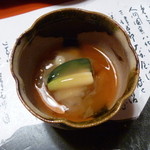
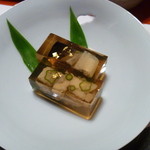
タンカ PIZZA
4.20
Fugu restaurant. The owner, manager, and third-generation owner are all present at the restaurant. It seems to be a place known for its research on fugu? There is even a museum at the restaurant, making it quite interesting. Fugu itself is quite bland, especially in a hot pot. It's delicious, but very bland. The broth brings out the blandness even more. I wish there was more meat, but it's quite expensive. However, they offer a variety of interesting dishes here. The fugu sashimi was cut differently than usual. I tried the internal organs (avoiding the poisonous parts) as well. The texture was good, but still bland. I wanted to eat slowly, but I wasn't feeling well, so couldn't eat much. The taste was good, but still bland. The third-generation young owner was very attentive and kind. The fugu here has a unique personality, more than just the taste. It seems they always start with a different style. I've been coming here often lately, and I hope to continue in the future. Thank you to the kind young owner. The ice cream was rich and delicious. Thank you for the meal.

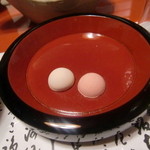
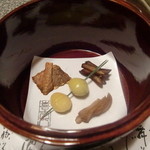
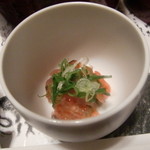
酔狂老人卍
4.00
Following the bear lunch, tonight is a blowfish feast. The atmosphere is like a scene from "a feast of wine and meat". Walking through the narrow streets, we arrive at a restaurant with a sign that reads "Blowfish Museum". Inside, we are greeted by a young master, who is in charge of the ancient pot on the stove. The blowfish dishes served here are unlike any other, with intricate preparations and unique techniques that leave us speechless. The restaurant also has a collection of blowfish skeletons, showcasing the owner's expertise in blowfish toxins. The young master challenges the conventional belief about blowfish toxins, adding an air of mystery to the dining experience. The story of the tragic death of a famous kabuki actor due to blowfish poisoning adds to the intrigue of the restaurant. The young master's passion and dedication to blowfish cuisine truly shine through in every aspect of the dining experience.

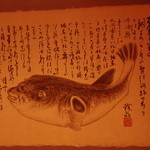
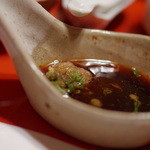
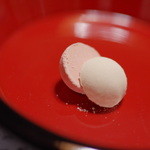
Email Login